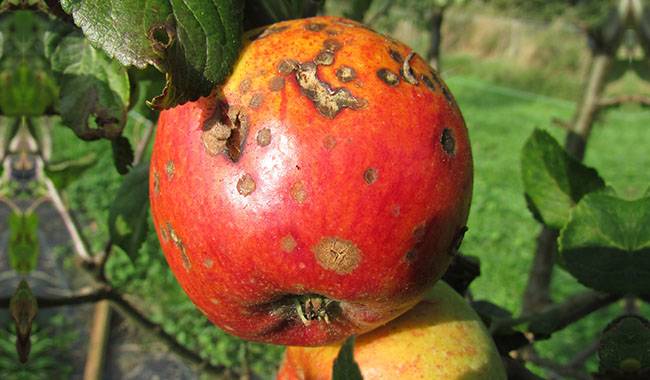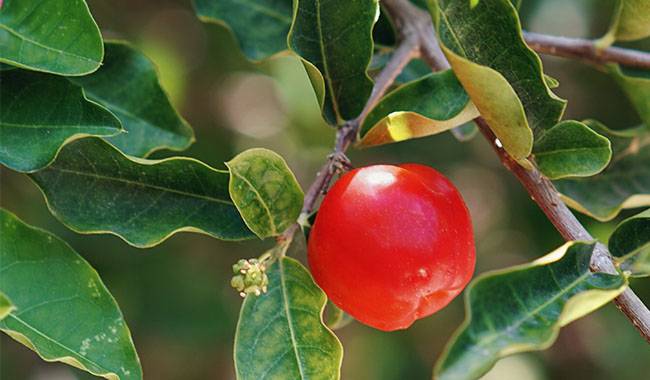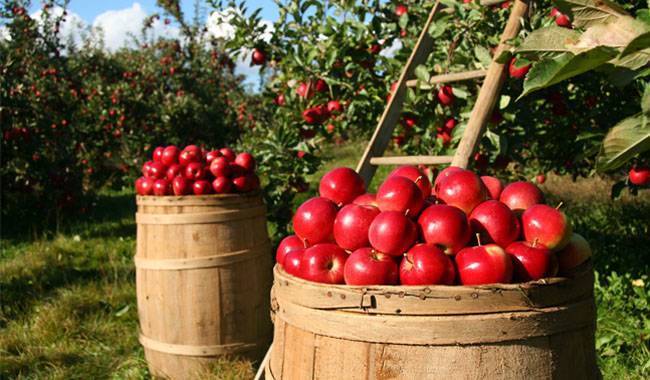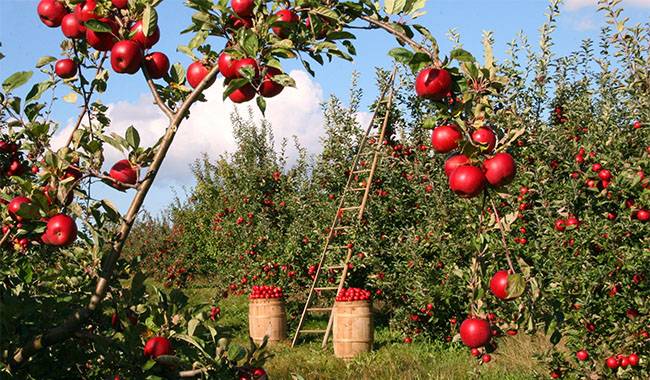
The most popular and beloved fruit tree, the apple tree, requires a special approach to everything. This includes when sowing seeds. Spring, which is good for increasing your variety collection, doesn’t last long. However, spring is the main planting time for apple trees in the Midlands, giving the plants the best chance to be ready for winter. Choosing the right location for your apple trees in the orchard is just the beginning, although it is very important. When planting apple trees in spring, it is worth remembering the rules of procedure and care, which will help seedlings to take root quickly. You will learn How to Plant and Care for Apple Trees in Spring in the ThumbGarden article.
When Can I Plant Apple Trees in the Spring?
In the central and northern regions, spring is the main and most “reliable” planting period for apple trees. The permissible planting date for apple trees is determined by the weather and the type of sapling selected for each particular year. The season begins when the snow melts and the soil warms up; for intermediate zones, it starts around March.
When purchasing open apple trees, the risk is higher and more care and attention should be taken when planting. As a standard, apple seedlings should be sold in a dormant state, so they should be planted in a dormant state – before the buds have swollen. The period before sap activity begins is the safest time to plant apple trees.
All plantings during the seedling growing season should be considered emergency and experimental. The longer you delay planting, the more the buds swell and the more active the growing season, the greater the risk of losing the plant and the more dependent the apple tree will be on care and watering.
If you purchase seedlings that are flowering and growing leaves, keep in mind that seedlings will be extremely difficult to acclimate, problem plants will become sick and weaken as they enter the overwintering season, and their development will be compromised.
For container seedlings with closed root systems, things are much easier: they can be planted at any time, even in May or early summer. If you don’t forget to water, the seedlings will grow so quickly that you will hardly notice the transplanting. The later you want to plant your apple trees, the more important it is to choose seedlings with sheltered roots.
How Do I Store and Transport Young Seedlings?
The process of purchasing healthy apple seedlings is a special adventure every time. From choosing a reliable variety and place of purchase to carefully checking and verifying the condition of roots, shoots, signs of cheating, or improper maintenance, there are many nuances to be aware of if you follow basic rules and follow logic rather than impulse, it’s hard to go wrong. But when the long-awaited apple tree is already yours, the hard part is just beginning. After all, the sapling still needs to be finished and preserved at planting time.
If you choose apple trees in containers, you don’t need to worry about transporting and storing them before planting. These seedlings can even endure a long wait for the right weather and location to be ready. Just water (but not flood) the seedlings as needed, and don’t let the soil dry out completely.
Apple trees with an open root system are more difficult to preserve. It is recommended to plant them on the day of purchase. The roots will dry out quickly and any delay will kill the seedlings. They should not be left in the air for even half an hour. The roots can be wrapped in a damp cloth or paper towel and placed in a plastic bag. Even better, fill the bag with damp sawdust, lime, or coconut fiber and dip the roots into the “filler. Tightly closed bags will allow the seedlings to survive transport. If you cannot plant them on the same day, you can protect the roots with putty and keep them in a cool place for a few days.
- Mix the substrate and clay with water in equal parts to form a thick sour cream-like “bolt”.
- Thoroughly coat all roots with the combination, dipping and spreading by hand if necessary.
- Do not allow the putty to dry and soak the roots in sawdust or an inert base.
- Carefully wrap the rhizome in burlap or heavy cloth and tie a plastic bag around it.
- Store the seedlings in as cool a place as possible until travel.
If the pit is not ready and the seedlings need to wait more than 5 days, bury them in a cool and shaded area of the garden.
What Should I Do if the Planting Site is Not Ready?
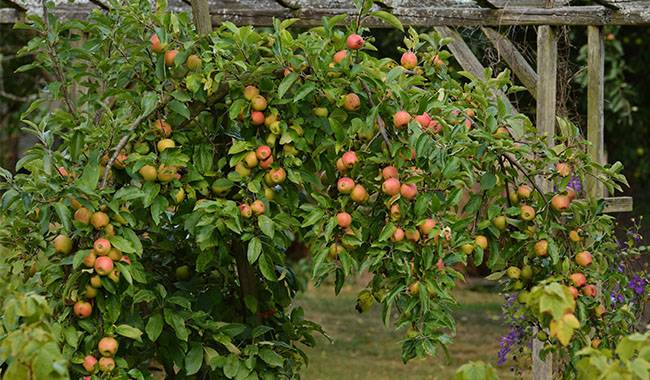
Apple trees, like other fruit trees, are planted in pre-prepared planting pits. The best option for spring planting is to do all the work in the fall, i.e. in October. At least, the pits should be prepared as soon as the soil thaws and mechanical tillage becomes possible. The soil should have time to settle and “settle”. The critical period is 2 weeks; the ideal period is 1.5 months.
The basic requirements for apple trees are simple: they are not suitable for cold winds, lowlands, uplands or strong shade. The ideal location is sheltered, open and sunny to the north, on the south side of houses, fences, outbuildings, on southern slopes, etc.
For neighboring fences, walls, buildings and utilities, leave 40-60 inches (1-1.5 m) for dwarf and colony apple trees, 80-120 inches (2-3 m) for medium growth, and 13 feet (4 m) for taller ones. The distance between plants depends on the size of the tree. For low-growing apple trees, it is about 80 inches (2 m) in the row and 13 feet (4 m) between rows, and for tall-growing apple trees, it is 16 feet (5 m) and 23 feet (7 m), respectively.
Apple trees should not be planted next to apricots, peaches, cherry plums, walnuts, raspberries and heather (including blueberries). Mixed orchards can consist of cherries, plums, pears and cherries.
Planting holes should be large enough that the roots of even the strongest cultivars can fit freely into them. The standard for apple trees is a depth of 23-27 inches (60-70 cm) and a width of about 31 inches (80 cm). A depth and width of only 20 inches (50 cm) is sufficient for colonizing cultivars. If there is a risk of stagnation and waterlogging, an additional drainage layer should be added to the depth.
There is nothing unusual about preparing a tree hole for the apple tree itself.
- Separate the top layer of fertile or topsoil (about the bayonet of a spade) from the bottom layer and pile it on different sides.
- Apply organic fertilizer to the topsoil – 1.5 to 2 buckets or 66-88 lbs (30-40 kg) of compost (humus can be substituted) and 150 to 200 g of grass ashes; do not mix, you can simply layer the organic matter with the soil.
Whether or not to use mineral fertilizers is a matter of personal choice. Natural tillage is limited to organic matter, while conventional tillage necessarily includes phosphorus and potassium fertilizers. When planting apple trees, you can apply half a cup (100-150 grams) of potassium chloride and 1-1.5 tablespoons of calcium superphosphate. Limit yourself to a reasonable amount and do not use 800-1000 grams of phosphorus fertilizer at a time, as some instructions suggest.
It is worth noting, however, that mineral fertilizers are hardly needed in the early stages of tree growth; they can leach into the lower layers of the soil and increase the risk of root scorch. Regular annual fertilization is a better way to apply fertilizer than putting large amounts in the soil at planting time.
When filling the planting pit with soil, be careful to shrink it and form a mound of 6-10 inches (15-25 cm). If the soil is too heavy or sandy, its composition must also be adjusted according to the general principles of soil improvement: adding clay to sandy soil and sand to clay.
How Do I Prepare My Soil for Planting Apple Trees?
In addition to the indispensable spade, you will need other helpers when planting apple trees.
- Sharp and convenient pruning shears.
- Standard bucket.
- Stakes, about 60 inches (1.5 meters) high, which will protect the seedlings from the strongest winds, and soft ropes for tying them.
- Labels or tags (if you are growing an apple tree, you can leave it unlabeled, but it is better to label the plant species at once).
Seedlings in containers should be watered liberally, preferably the day before planting, so that the soil is moist but not soggy. Seedlings with open roots should be immersed in water, soaking the roots in moisture for several hours. If the seedlings are very dry, soak them whole and check the condition of the bark. Inspection of the roots will reveal any damaged, rotten, broken or dry roots that need to be removed or trimmed back to healthy tissue with a secateurs or sharp knife. If the roots are too long, shorten them.
When planting in the spring, it is a good idea to soak the roots in a clay paste (cover with soil to prevent the acidified mixture of soil and clay from drying out).
How to Plant Apple Trees Correctly in Spring?
Luckily or not, in apple tree planting itself, everything has a standard. For different seedlings, the basic principles differ only slightly. When planting container apple trees, it is not necessary to remove all the soil from the planting hole, but only to make a hole slightly larger than the container. On the other hand, for bare-root apple trees, a full, deep planting hole is needed to allow the roots to extend more easily.
- At the bottom of the hole, lay a mound of substrate, place the seedling on top and insert a peg in the middle. The safest option is to put three nails around the planting hole, but in a sheltered area, one nail will suffice.
- Place the sapling carefully on the mound, 2 inches (5 cm) or more from the stake, spreading out all the roots, making sure not to break them. Using your hands, gradually fill the space between the roots with soil, tamping the soil down slightly and making sure the root neck stays about 2 inches (5 cm) above the soil – not to be confused with the grafting site – in an arc 2-6 inches (5-15 cm) from the root neck. You can simplify the procedure by pouring out a bucket of water first, refilling the soil before the water is absorbed, letting it settle a little, and compacting it with the palm of your hand on top.
- Make an irrigation hole and soak the soil deeply with 2-3 buckets of water.
- Cover the root zone with soil to a height of 2-4 inches (5-10 cm), leaving a small circle of about 4 inches (10 cm) around the trunk (compost, peat, humus, dry soil – the best mulch is the one you have).
- Tie the seedling to the stake to complete the planting (non-angular, figure-of-eight).
How to Prune the Planted Apple Trees?
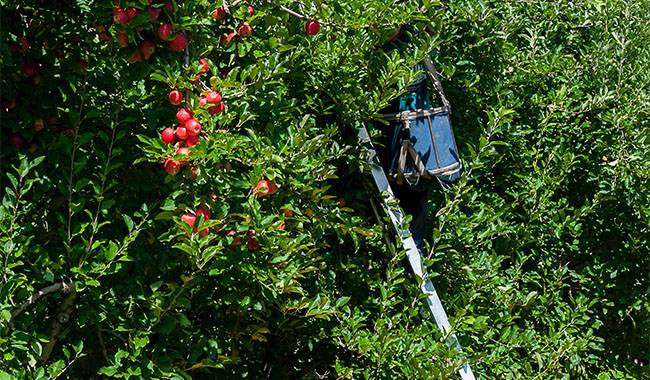
Pruning is required for both annual and biennial apple trees. Its main purpose is to restore the balance between above- and below-ground parts and to improve rooting capacity. But the first pruning also sets the tone for the formation of the entire canopy. At a height of 30-40 inches (80-100 cm), annual seedlings without side shoots are cut off and the boom is set.
Branching seedlings are stripped of very low branches up to 20-27 inches (60-70 cm) are removed), all other branches are shortened by one-third or slightly shorter, and a layered canopy is immediately established – with the longest branches at the bottom and the central leader branch 6-8 inches (15-20 cm) high above the upper lateral branches.
Uniform, clean-cutting rules are standard: trim the cut with a sharp tool a few millimeters above the buds and trim the lateral branches facing outward above the buds.
What Can I Do to Help My Apple Trees Adapt to Their New Location?
Mulching is the first and most important step when planting apple trees. This is not only because mulch prevents water evaporation and frost return, but also stabilizes conditions. A protective layer prevents overheating and prevents soil compaction. But there are ways to help young apple trees besides mulching.
- Pay attention to precipitation to avoid complete drying of the soil and lack of moisture (2-3 maintenance waterings in spring and the same watering in summer will be sufficient).
- Loosen the soil regularly and keep it from being compacted.
- Do not allow weeds to loosen.
Most importantly, do not rush to fertilize, let the seedlings use the fertilizer placed in the planting hole and do not start regular fertilization until the following spring, and even then, only when there are signs of poor growth.





